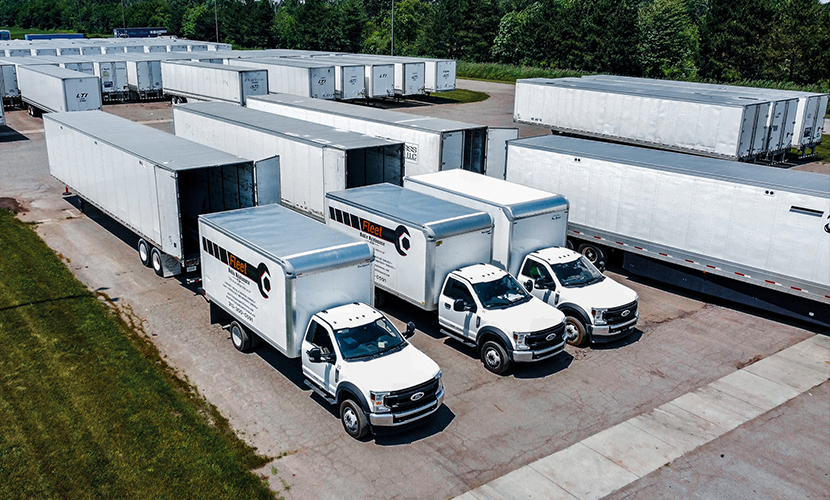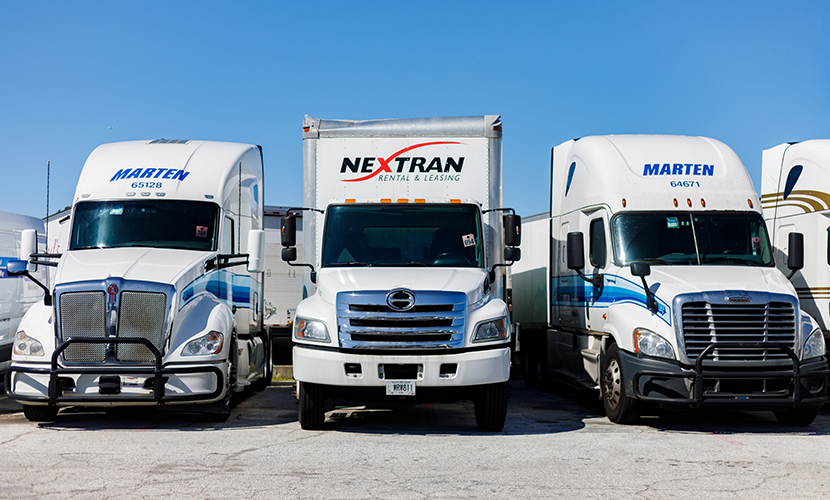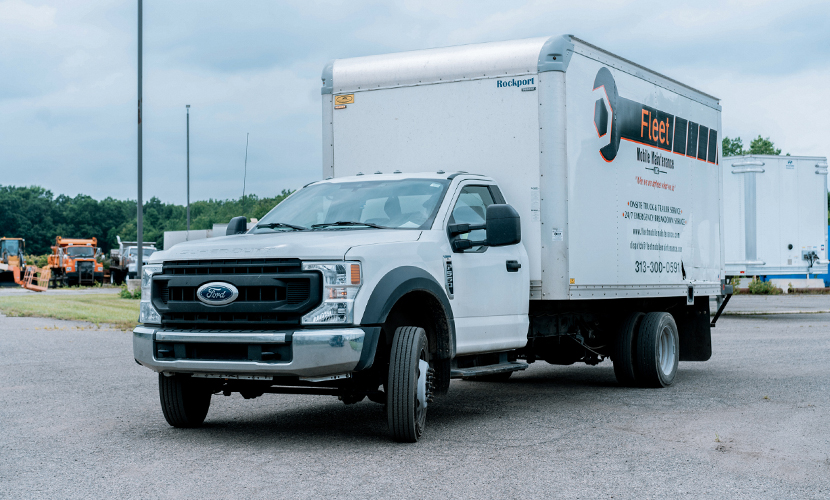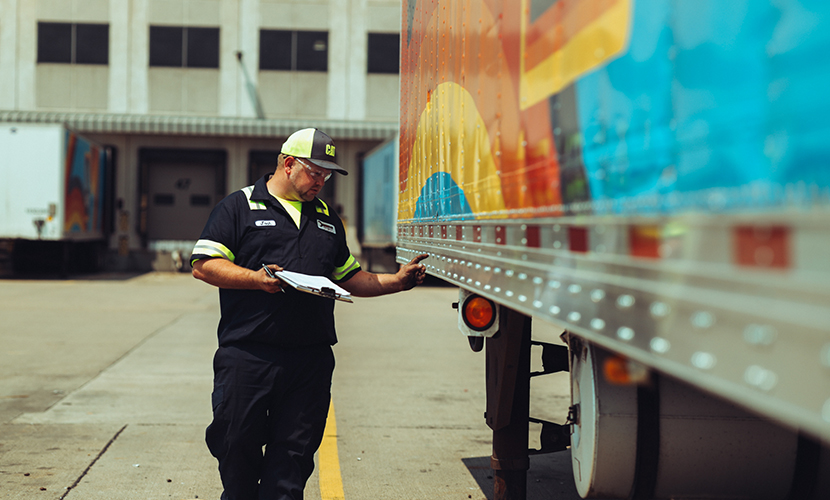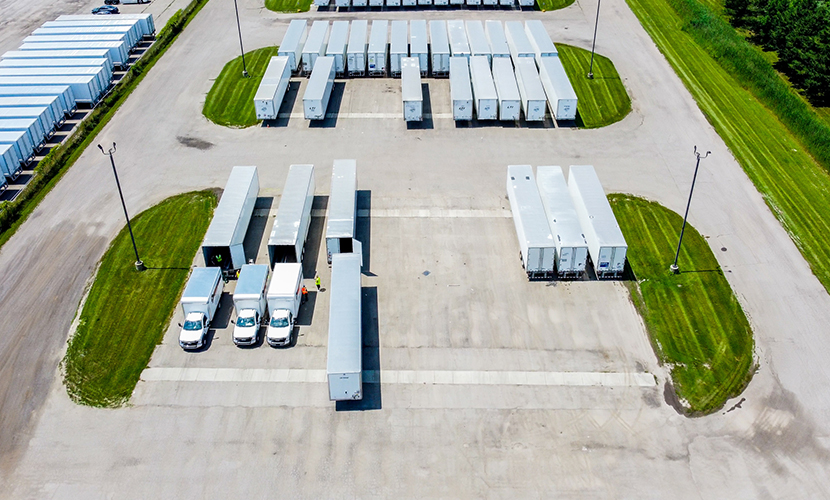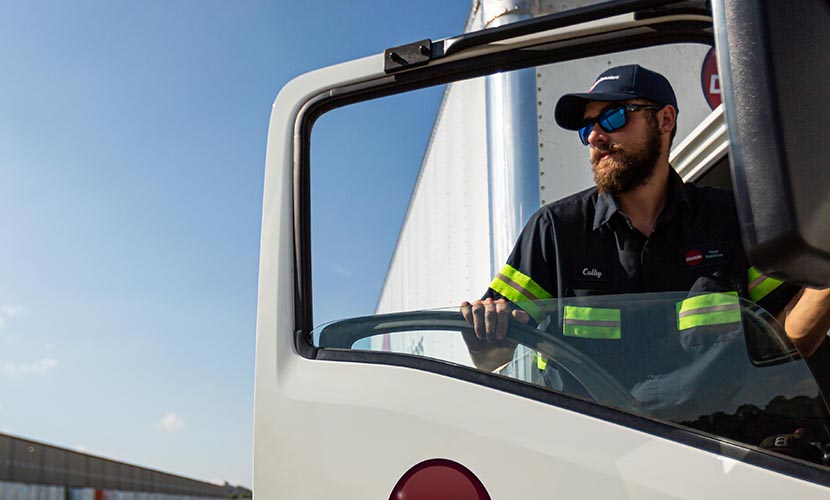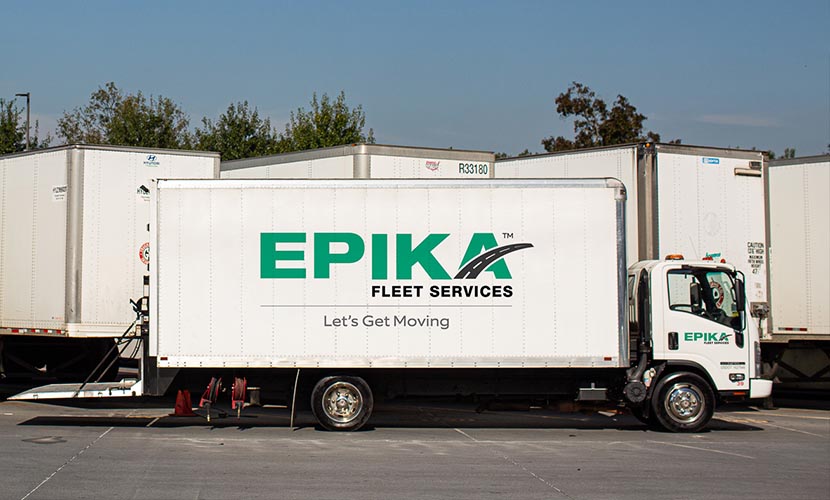FAQ: Can You Change a CDL from Intrastate to Interstate?
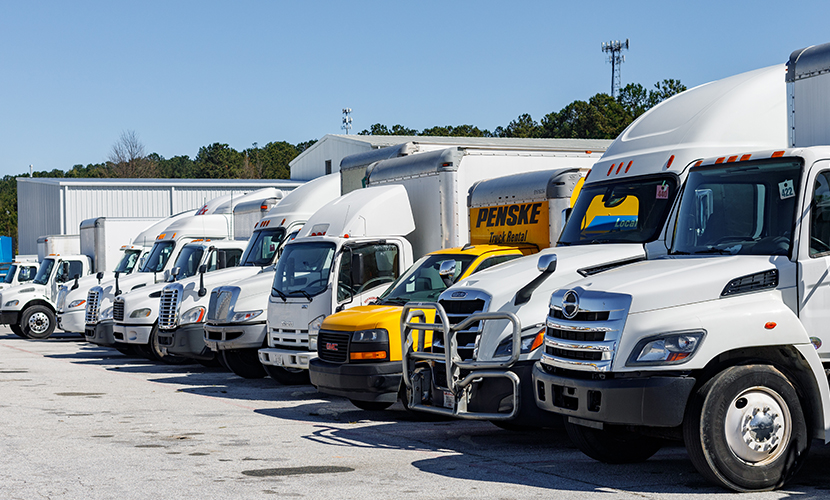
Any company with a fleet of trucks needs drivers with CDLs, or Commercial Driver’s Licenses, to operate those vehicles. However, there is more than one kind of CDL, which means your drivers need to have the right kind of license for the vehicle they operate and for the kind of travel they do.
One of the most important elements of a CDL is whether it’s an intrastate license or an interstate license. What are these, what’s the difference, and can you change from one to the other? Read our FAQ to find out more.
Table of Contents
Who Issues a CDL?
One of the first and most important things to know about interstate and intrastate trucking is that there are different authorities in play.
First of all, you have the FMCSA. The FMCSA is the Federal Motor Carriers Safety Administration, and it’s the federal government’s regulating body that sets rules and standards for the operation and safety of commercial motor vehicles across the country. They set rules, and they govern registrations and regulations, but critically, they do not issue CDLs. They are, essentially, a governing body that sets the bare minimum rules to ensure that all states have at least a certain level of safety; many states add their own more stringent rules on top.
Actual CDLs are instead issued by the state’s Secretary of State and Department of Motor Vehicles. Both interstate and intrastate CDLs are issued in the same way through roughly the same process. While the requirements are largely the same between different states and types of licenses, there may be additional rules depending on the state.
What is an Intrastate CDL?
A commercial driver’s license (CDL) for in-state use only allows a driver to use a commercial vehicle in their home state. It’s perfect for all sorts of driver tasks, from local deliveries within the city to long statewide trips.
But hold on, the type of CDL you have—be it Class A, B, or C—is important too:
| CDL Class | Criteria |
|---|---|
| Class A |
|
| Class B |
|
| Class C |
|
Let me tell you how it works: the in-state restriction (often referred to as intrastate) sets the boundaries for where you can drive, while the CDL class gives you the green light on the types of vehicles you can drive. If you want to drive enormous vehicles like tractor-trailers or vehicles that weigh a hefty 26,001 pounds or more, then you’re going to need a Class A CDL. And that’s only if your trailer weighs over 10,000 pounds.
On the flip side, Class B and Class C CDL each have their own places—they let you drive different types and sizes of vehicles to meet certain transport needs within the state. So, if you’re interested in driving smaller vehicles or vehicles with special features, these CDLs are what you need. All in all, it’s about getting the right CDL for the right job within your state.
“How does one distinguish between intra- and interstate commerce for the purposes of applicability of the Federal Motor Carrier Safety Regulations (FMCSRs)?
FMCSR Guidance: Interstate commerce is determined by the essential character of the movement, manifested by the shipper’s fixed and persistent intent at the time of shipment, and is ascertained from all of the facts and circumstances surrounding the transportation. When the intent of the transportation being performed is interstate in nature, even when the route is within the boundaries of a single State, the driver and Commercial Motor Vehicle (CMV) are subject to the Federal Motor Carrier Safety Regulations (FMCSRs).
Note: A trucking company hauls freight from California to Idaho. Another shipping company delivers the commodity to its final destination. Although the second company travels entirely in-state, the original intent of the shipment is interstate and covered by DOT. However, if the first company delivers to a warehouse in Idaho, delivery trucks taking the commodity to customers are not considered involved in interstate commerce if the original manifest did not indicate the shipments were intended for these customers.” – OSHA.
A handful of examples can help illustrate this.
First, imagine you have a load that begins in New York. This load travels by rail to Illinois, where a CDL driver picks it up and delivers it to a location in Chicago. This driver, though they never leave Illinois, must have an interstate CDL rather than an intrastate CDL because the intent of the load as a whole is interstate.
Second, imagine you have a load that starts in Baton Rouge, LA and is bound for Ferriday, LA. The fastest and most efficient route for this load is north through Route 61; however, this route takes the truck out of Louisiana and into Mississippi for part of the journey. Even though the load is bound to a destination in the same state as the origin, it travels out of the bounds of the state, so the driver must have an interstate CDL.
A third example is a standard postal company like UPS. Loads carried from a shipping hub to a warehouse in another state need to be carried by a driver with an interstate CDL; however, the drivers who deliver loads locally from the warehouse to the surrounding area do not need an interstate CDL, because the individual deliveries are considered different loads.
These examples are just scratching the surface of the difference between interstate and intrastate CDLs; they go to show you how varied and nuanced the regulations can be.
What is an Interstate CDL?
A driver can utilize an interstate CDL to transport loads across different states and even beyond national borders. It’s particularly important for people engaged in long paths spanning many regions or countries.
Similar to state-specific CDLs, a driver’s capacity to handle certain types of vehicles during business activities shifts based on the CDL class (A, B, or C). The needed CDL class is determined by the type of ride they’re handling, be it a heavy tractor-trailer or a bus filled with people. While operating in various states with interstate CDLs, the drivers are required to meet slightly tougher conditions; these arise due to a larger working area and the need to abide by different state and national rules.
Interstate commerce encompasses long-distance transports and certain accords, allowing some CDL holders to haul loads into Canada and Mexico. The focus isn’t solely on the driver crossing state borders but also on where the cargo originates and where it’s off to. Therefore, it caters to the broader range of commerce taking place between states.
One special note is that interstate CDLs are not just inter-state; they can even be cross-country. Both Mexico and Canada have reciprocity agreements to allow certain drivers with CDLs to transport loads across borders, in addition to across state lines.
“The only foreign commercial driver licenses (CDLs) that are accepted in the United States are from the federal government of Mexico and provinces and territories in Canada. The United States has CDL reciprocity agreements with only these two North American countries. In rare instances, FMCSA may issue temporary waivers (up to 90 days) or exemptions (up to two years) to allow drivers licensed in other countries to operate in the United States. These drivers are required to carry the waiver or exemption document with them.” – FMCSA.
In general, the requirements for an interstate CDL are slightly higher than those of an intrastate CDL, but the difference is relatively minimal in most cases. In fact, for many drivers, the switch is as simple as filling out a form.
Are There Specific Insurance Requirements for Different CDLs?
Yes. Typically, intrastate requires a certain level of insurance coverage, and interstate requires a higher level of coverage. Additionally, certain kinds of loads, like oil, hazardous materials, or very heavy loads, will have specific, higher insurance coverage requirements. However, all of this also varies from state to state.
The FMCSA sets minimum requirements, but many states add additional requirements on top.
“The Federal Motor Carrier Safety Administration (FMCSA) requires carriers hauling freight across state lines to meet minimum coverage limits for public liability insurance. Coverage minimums will vary depending on the type of freight you move and the vehicle weight.
- Non-hazardous transported in a vehicle weighing less than 10,001 pounds: $300,000
- Non-hazardous transported in a vehicle weighing more than 10,001 pounds: $750,000
- Hazardous material moved by private carriers and for-hire: $5 million
- Oil carried by private carrier and for-hire: $1 million
These are minimums. Many shippers and brokers will require you to have at least $1 million worth of coverage, even for non-hazardous freight.” – Truck Stop.
Navigating insurance requirements is often the task of the fleet manager or the shipping company rather than the driver, however, while the drivers themselves are responsible for their own CDL status.
Can You Change from Intrastate to Interstate?
Yes. The specific process will also vary from state to state, but in general, it’s very simple. Typically, in order to get an interstate CDL, you must have a valid intrastate CDL, a valid medical examiner’s certificate, and must be at least 21 years old. You’ll also need a valid birth certificate and/or passport. However, some states will have these on file from your intrastate license application.
For many drivers, the process for switching from an intrastate CDL to an interstate CDL is as simple as going to their state’s DMV website, finding the relevant form, and filling it out. They will need to submit their medical examination results and wait for it to be processed, which can be anywhere from nearly instant to a week or two of waiting. After that, as long as they meet the qualifications, an interstate CDL will be issued.
What is the Medical Examiner’s Certificate?
Because of the inherent risk and danger of operating a massive multi-ton commercial vehicle, drivers are held to higher standards for health and physical ability. They must obtain a certificate that qualifies them for trucking issued by a certified medical examiner.
According to the FMCSA:
“All commercial drivers of vehicles in interstate commerce with a maximum gross vehicle weight rating of over 10,000 pounds (4,536 kilograms) are required to obtain and maintain a valid Medical Examiner’s Certificate (ME Certificate). Commercial drivers who drive vehicles requiring a CDL have two additional requirements. On or before January 30, 2014, all CDL holders must declare to their State Driver Licensing Agency (SDLA) that they only operate or expect to operate commercially in 1 of 4 possible categories with their CDL. This process is called self-certification.” – FMCSA.
Contrary to the way it sounds, this does not exclude drivers with certain impairments, such as missing limbs. Drivers can obtain what is known as a Skill Performance Evaluation to prove that they are still capable of operating a vehicle at full capacity and safety; once issued, the driver can remain certified to drive.
“Drivers with physical impairments, which affect their ability to safely operate CMVs, must obtain a “variance” from their State in order to be approved to drive commercially. The variance document must be carried with the commercial driver whenever they are operating a commercial motor vehicle. A Skill Performance Evaluation (SPE) is a special type of “variance” required for drivers with impaired or missing limbs (e.g., a hand or finger, an arm, foot, or leg). Drivers with missing limbs, if eligible, must obtain an SPE certificate. The commercial driver must always carry the SPE certificate at all times.” – FMCSA.
Do Specific States Have Different Rules?
Yes. There are both some state-level and some federal-level rules that will apply to interstate license-holders that don’t to intrastate holders.
For example, New York has the HUT permit, Kentucky requires a KYU number, New Mexico has a Weight Distance Permit, and Oregon requires a $2,000 bond for interstate trucks.
At the company level, you will likely need to register under the International Fuel Tax Agreement, get a Unified Carrier Registration number and a US DOT number, and may need to get specific plates for trucks operating interstate.
Can a Driver Have Multiple CDLs?
A common question is whether or not these CDLs are mutually exclusive.
- Does a driver need both an interstate CDL and an intrastate CDL?
- Does a driver need an interstate CDL for each state they will travel through?
- Does a driver need a special license for commerce entering or leaving Canada or Mexico?
The answer to all of these is no. Each individual can only have one CDL; having more than one is illegal and can result in fines and even jail time for the driver in question.
An intrastate license is all that is required for local, short-distance hauling or even longer-distance hauling as long as the load originates and stays within the borders of the state. Most shipping companies that aren’t cross-country shipping companies or companies on the border of states are likely to only require intrastate licenses.
An interstate license is all that is required for just about any other hauling. There are, however, some additional requirements for special circumstances.
- If the truck will have double or triple trailers.
- If the truck carries a tank (the kind that holds liquids, not the military kind.)
- If the truck carries hazardous materials.
- If the vehicle carries passengers, like a bus.
Each of these special circumstances requires both additional training and greater requirements for a CDL that can handle it.
Need Support for Interstate Trucking?
At Epika, we maintain a vast network of service centers, fleet support locations, and other facilities to help any and all trucking companies better manage their fleets.
Any good fleet requires proper maintenance, and we can help you keep it up. Just click here to learn more!

